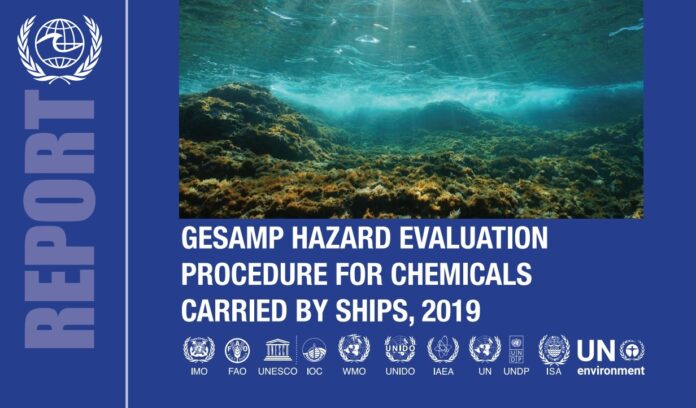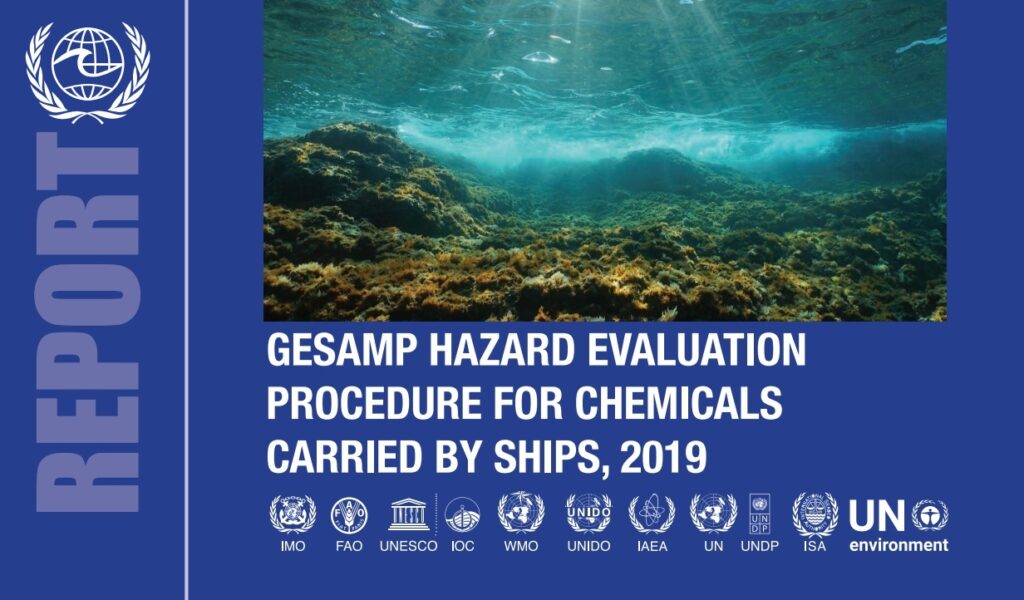
(www.MaritimeCyprus.com) This edition of the GESAMP Hazard Evaluation Procedure provides an updated set of criteria for evaluating the hazards of chemicals (substances and mixtures) that may enter the marine environment through operational discharge, accidental spillage, or loss overboard from ships.
This edition of the GESAMP Hazard Evaluation Procedure provides an updated set of criteria for evaluating the hazards of chemicals (substances and mixtures) that may enter the marine environment through operational discharge, accidental spillage, or loss overboard from ships. Hazards to both human health and the marine environment are considered and the information is collated in the form of a “hazard profile”, a comprehensive but easily readable fingerprint of the hazard characteristics of each substance. The hazard profiles of substances carried by ships that have been prepared by the Evaluation of the Hazards of Harmful Substances Carried by Ships (EHS) Working Group of GESAMP are published at regular intervals and a “GESAMP/EHS Composite list of hazard profiles” is available from the International Maritime Organization (IMO) here
This document has been developed to provide a description of the basis by which chemicals are evaluated and GESAMP hazard profiles assigned (“methodology”) to inform a range of audiences including:
- maritime administrations;
- companies shipping bulk liquids;
- producers of bulk chemicals;
- those required to submit data under regulative processes for bulk liquid shipments;
- first responders to maritime emergencies;
- responders to marine spills; and
- those with a general interest in hazard evaluation of chemical substances.
The purpose of this new edition is not to replace the revised GESAMP hazard evaluation procedure, but to update it with as little disruption to the user as possible, only introducing changes where necessary, in particular to ensure harmonization with IMO regulations and the United Nations Globally Harmonized System of Classification and Labelling of Chemicals (GHS).
The United Nations Globally Harmonized System of Classification and Labelling of Chemicals (United Nations, 2017) was developed to enable the global harmonization of chemical hazard classification and communication in the areas of transport, including the sea, inland waterways, road and rail, as well as consumer, worker and environmental protection.
The revised GESAMP hazard evaluation procedure, although specifically developed for the maritime transport of bulk liquid chemicals, is substantially in line with the GHS. The revised MARPOL Annex II (IMO, 2017a) entered into force on 1 January 2007. By this date, the EHS Working Group had converted more than 850 hazard profiles into a new system to allow for the recalculation of the pollution category, ship type and carriage conditions, in accordance with the new requirements. When the first edition of the GESAMP Reports and Studies 64 was published in 2002 (GESAMP, 2002a), it was based on decisions made in the period 1995 to 2000.
After more than 10 years from its publication and 15 years from its inception, it was felt by GESAMP that a second edition should be prepared. This edition updated the revised hazard evaluation procedure, in the light of global developments in the understanding of chemical hazards. The implementation and further amendments of the Globally Harmonized System of Classification and Labelling of Chemicals (GHS) in particular in Europe with the CLP (EU, 2008) regulation and its guidelines provide a global standard for the hazard evaluation of substances and mixtures.
Download the full report below:














